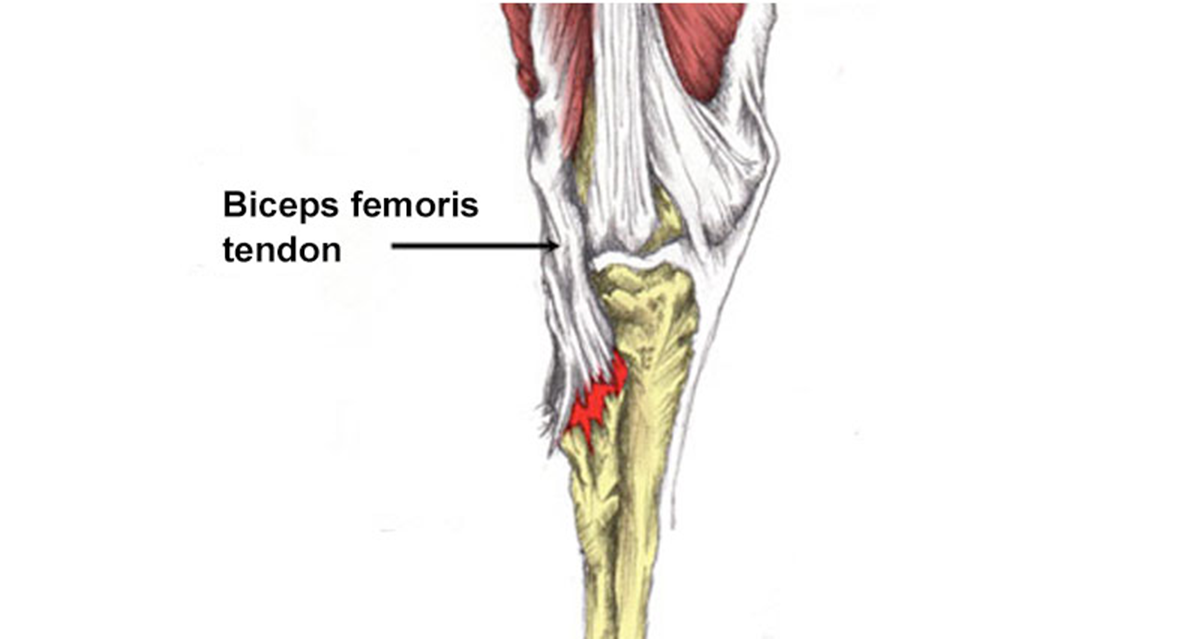A biceps femoris avulsion strain or fracture happens when the tendon separates from the bone, taking a small bone fragment with it. This leads to pain and swelling at the outer back of the knee. It is frequently misdiagnosed as a mere tendon injury.
Medically reviewed by Dr Chaminda Goonetilleke, 31st Dec. 2021
Biceps femoris avulsion symptoms
Symptoms of a Biceps femoris avulsion resemble those of a tendon strain and include:
- Sudden, intense pain at the outer back of the knee.
- Playing through the pain is typically not feasible due to the severity of discomfort.
- Swelling occurs at the site where the tendon attaches to the bone.
- Substantial reduction in hamstring muscle strength.
- Pain is experienced when attempting to flex the knee against resistance.
- Palpation reveals tenderness and pain upon touch.
- In some cases, the bone fragment may be palpable through the skin.
Imaging
Your doctor may employ X-ray imaging to diagnose an avulsion fracture.
Anatomy
Biceps Femoris Tendon Avulsion:
An avulsion of this tendon involves its separation from the bone, often carrying a bone fragment. Typically, the long head’s attachment to the ischial tuberosity in the buttocks is affected, although it can also occur at the knee’s rear.
About the Biceps Femoris Muscle:
Comprising two muscle bellies—long head and short head—this muscle is part of the three hamstring muscles. The long head originates from the hip bone’s rear (ischial tuberosity), while the short head stems from the thigh bone’s back (femur). These muscle bellies unite, traverse the knee joint, and attach to the shin bones’ top outer surface. Like other hamstrings, it functions to flex the knee and extend the hip.
Causes
These injuries typically result from forceful kicking movements or explosive knee flexion like high-speed sprinting. Increased susceptibility stems from fatigue, inadequate warm-up, or a prior hamstring injury.
Frequency and Explanation:
Injuries to the biceps femoris are more common compared to other hamstring muscles. One reason is the unique innervation of its two heads by different sciatic nerve branches. During fatigue or insufficient warm-up, disorganized nerve firing can lead to improper muscle contractions and subsequent injury.
Treatment for biceps femoris avulsion
Immediate First Aid:
Use the PRICE principles: Protect, Rest, Ice, Compress, and Elevate.
Cold Therapy: During the acute phase, apply cold therapy or ice for 10-15 minutes every hour, then reduce frequency as symptoms improve.
Rest and Immobilization: Conservative treatment involves total rest, followed by gradual reintroduction of exercises. For severe injuries, your knee may be immobilized at a 90-degree angle for weeks to aid healing.
Surgery: For the most severe cases, surgical repair is required, though recovery time is generally extended.

